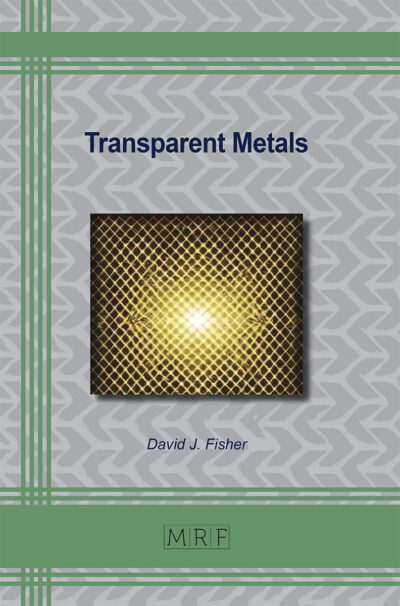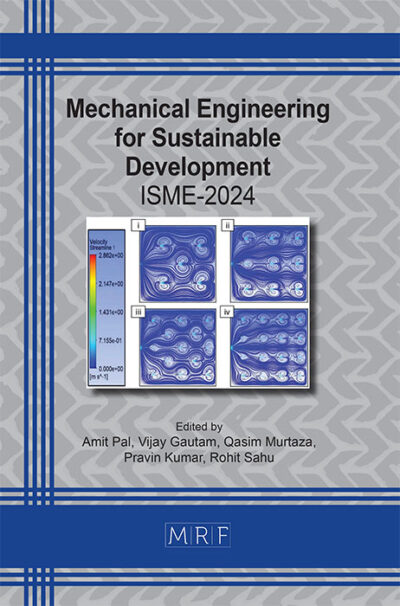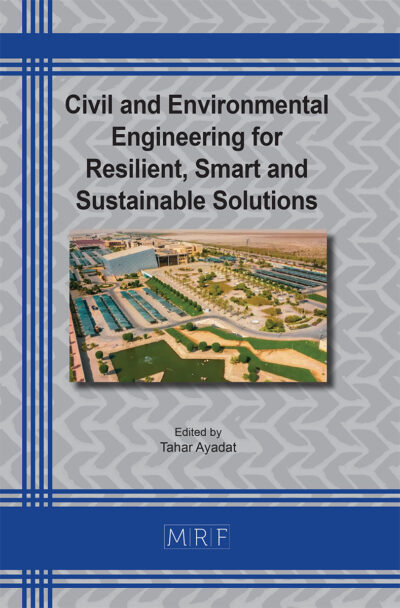Optimizing cover concrete durability in ready mixed concrete a critical review of curing methods and their impact on performance
Nayeemuddin MOHAMMED, Mohammad Abdul MANNAN, Hend Walid Alotaibi, Andi ASIZ, Tahar AYADAT, Mohammad Ali KHASAWNEH
Abstract. The durability of reinforced concrete buildings is greatly determined by the quality of the cover concrete, especially under hard conditions. Effective curing processes are required to optimize the qualities of cover concrete in ready-mixed concrete. This paper objectively assesses the influence of several curing processes, including membrane, steam, and wet curing, on the development of concrete strength, permeability, and resistance to environmental conditions. It also investigates the impact of concrete mix composition, ambient conditions, and curing time on the effectiveness of various methods. The evaluation outlines best practices and guidance for choosing appropriate curing techniques based on project specifications. Case studies also show how curing processes may be used successfully to improve the longevity of cover concrete. The challenges of applying optimal curing procedures are reviewed, as well as recommendations for future study to solve knowledge gaps and enhance cover concrete performance. Finally, the assessment emphasizes the need of adequate curing in ensuring the lifetime and sustainability of reinforced concrete buildings.
Keywords
Concrete, Curing, Ready Mix Concrete, Structural Concrete, Cover Concrete
Published online 2/25/2025, 10 pages
Copyright © 2025 by the author(s)
Published under license by Materials Research Forum LLC., Millersville PA, USA
Citation: Nayeemuddin MOHAMMED, Mohammad Abdul MANNAN, Hend Walid Alotaibi, Andi ASIZ, Tahar AYADAT, Mohammad Ali KHASAWNEH, Optimizing cover concrete durability in ready mixed concrete a critical review of curing methods and their impact on performance, Materials Research Proceedings, Vol. 48, pp 279-288, 2025
DOI: https://doi.org/10.21741/9781644903414-31
The article was published as article 31 of the book Civil and Environmental Engineering for Resilient, Smart and Sustainable Solutions
![]() Content from this work may be used under the terms of the Creative Commons Attribution 3.0 license. Any further distribution of this work must maintain attribution to the author(s) and the title of the work, journal citation and DOI.
Content from this work may be used under the terms of the Creative Commons Attribution 3.0 license. Any further distribution of this work must maintain attribution to the author(s) and the title of the work, journal citation and DOI.
References
[1] F.F. Wafa, S.A. Shihata, Effect of Curing on the Strength of Ready-Mixed Concrete in Hot and Humid Climate, 6 (1994). https://doi.org/10.4197/Eng.6-1.10
[2] A.M. Alhozaimy, Effect of retempering on the compressive strength of ready-mixed concrete in hot-dry environments, Cem. Concr. Compos. 29 (2007) 124–127. https://doi.org/10.1016/j.cemconcomp.2006.08.007
[3] P.S. Mangat, M.C. Limbachiya, Effect of initial curing on chloride diffusion in concrete repair materials, Cem. Concr. Res. 29 (1999) 1475–1485. https://doi.org/10.1016/S0008-8846(99)00130-1
[4] M.H. Akeed, S. Qaidi, H.U. Ahmed, R.H. Faraj, S.S. Majeed, A.S. Mohammed, W. Emad, B.A. Tayeh, A.R.G. Azevedo, Ultra-high-performance fiber-reinforced concrete. Part V: Mixture design, preparation, mixing, casting, and curing, Case Stud. Constr. Mater. 17 (2022) e01363. https://doi.org/10.1016/j.cscm.2022.e01363
[5] Y. Liu, J. Zhang, J. Chang, S. Xie, Y. Zhao, Effect of the Thermal Insulation Cover Curing on Temperature Rise and Early-Age Strength of Concrete, Materials 15 (2022) 2781. https://doi.org/10.3390/ma15082781
[6] D.S. Patil, D.S.B. Anadinni, Utilizing Porous Light Weight Aggregates for Self-Curing Concrete: Mechanism & Practical Considerations in Ready-Mixed Concrete Plant, 06 (2019).
[7] O. S. O., A. R., A. M. A., A. O. D., Effect of Curing Methods on the Compressive Strengths of Palm Kernel Shell Concrete, Civ. Eng. Archit. 9 (2021) 2286–2291. https://doi.org/10.13189/cea.2021.090716
[8] H. Wang, B. Guo, Y. Guo, R. Jiang, F. Zhao, B. Wang, Effects of Curing Methods on the Permeability and Mechanism of Cover Concrete, J. Build. Mater. Sci. 5 (2023) 20–31. https://doi.org/10.30564/jbms.v5i1.5484
[9] Y. Kato, Characteristics of the Surface Air Permeability Test and the Evaluation of Quality Variation in Cover Concrete due to Segregation of Concrete, J. Adv. Concr. Technol. 11 (2013) 322–332. https://doi.org/10.3151/jact.11.322
[10] H.W. Reinhardt, A. Dinku, EFFECfS OF CURING ON THE GAS PERMEABILITY OF COVER CONCRETE, (n.d.).
[11] T. Gereziher Atsbha, S. Zhutovsky, The effect of external curing methods on the development of mechanical and durability-related properties of normal-strength concrete, Constr. Build. Mater. 324 (2022) 126706. https://doi.org/10.1016/j.conbuildmat.2022.126706
[12] I. Akinwumi, Z. Gbadamosi, Effects of Curing Condition and Curing Period on the Compressive Strength Development of Plain Concrete, Int. J. Civ. Environ. Res. 1 (2014) 83–99.
[13] H. Hamada, A. Alattar, B. Tayeh, F. Yahaya, I. Almeshal, Influence of different curing methods on the compressive strength of ultra-high-performance concrete: A comprehensive review, Case Stud. Constr. Mater. 17 (2022) e01390. https://doi.org/10.1016/j.cscm.2022.e01390
[14] A. Al Shouny, U.H. Issa, Y. Miky, I.A. Sharaky, Evaluating and selecting the best sustainable concrete mixes based on recycled waste materials, Case Stud. Constr. Mater. 19 (2023) e02382. https://doi.org/10.1016/j.cscm.2023.e02382
[15] M. Karam, R.D. Hooton, Assessing the impact of curing on chloride penetration resistance of the concrete cover using sorptivity profiling, Can. J. Civ. Eng. 49 (2022) 1008–1013. https://doi.org/10.1139/cjce-2020-0387
[16] O.O. Lawal, O.P. Agboola, Comparative Study Of Diverse Concrete Curing Methods, 6 (2021).
[17] K. Federowicz, M. Kaszyńska, A. Zieliński, M. Hoffmann, Effect of Curing Methods on Shrinkage Development in 3D-Printed Concrete, Materials 13 (2020) 2590. https://doi.org/10.3390/ma13112590
[18] S.A. Austin, A.A. Al-Kindy, Air permeability versus sorptivity: effects of field curing on cover concrete after one year of field exposure, Mag. Concr. Res. 52 (2000) 17–24. https://doi.org/10.1680/macr.2000.52.1.17
[19] H.Y. Aruntaş, E. Nallı, G. Kaplan, Usage of ready-mixed concrete plant wastewater in concrete with superplasticizer: Effect on physico-mechanical properties, Constr. Build. Mater. 348 (2022) 128641. https://doi.org/10.1016/j.conbuildmat.2022.128641
[20] Self-healing concrete: Fabrication, advancement, and effectiveness for long-term integrity of concrete infrastructures – ScienceDirect, (n.d.). https://www.sciencedirect.com/science/article/pii/S111001682300368X (accessed May 25, 2024).
[21] N. Yazdani, M. Filsaime, S. Islam, Accelerated Curing of Silica-Fume Concrete, J. Mater. Civ. Eng. 20 (2008) 521–529. https://doi.org/10.1061/(ASCE)0899-1561(2008)20:8(521)
[22] N.R. El-Sakhawy, H.S. El-Dien, M.E. Ahmed, K.A. Bendary, Influence of curing on durability performance of concrete, Mag. Concr. Res. 51 (1999) 309–315. https://doi.org/10.1680/macr.1999.51.5.309
[23] H. Li, A. Zhou, Y. Wu, L. Deng, K. Zhu, F. Lu, Research and Development of Self-Waterproofing Concrete for Tunnel Lining Structure and Its Impermeability and Crack Resistance Characteristics, Materials 16 (2023) 5557. https://doi.org/10.3390/ma16165557
[24] O. Idowu, L. Black, The effect of improper curing on properties that may affect concrete durability, Mag. Concr. Res. 70 (2018) 633–647. https://doi.org/10.1680/jmacr.17.00148
[25] J.T. Kevern, V.R. Schaefer, K. Wang, The Effect of Curing Regime on Pervious Concrete Abrasion Resistance, J. Test. Eval. 37 (2009) 337–342. https://doi.org/10.1520/JTE101761
[26] S. MM, A. Ayyadurai, S. P, Optimizing Concrete Performance through Metakaolin and Flyash Incorporation: A Critical Appraisal of Regression Modeling and Design Code Applicability, 2024. https://doi.org/10.21203/rs.3.rs-4169237/v1
[27] N. Mohammed, A. Asiz, M.A. Khasawneh, H. Mewada, T. Sultana, Machine learning and RSM-CCD analysis of green concrete made from waste water plastic bottle caps: Towards performance and optimization, Mech. Adv. Mater. Struct. (2023) 1–9. https://doi.org/10.1080/15376494.2023.2238220
[28] N. Mohammed, Characterization of sustainable concrete made from wastewater bottle caps using a machine learning and RSM-CCD: towards performance and optimization, in: 2023: pp. 38–46. https://doi.org/10.21741/9781644902790-4
[29] J.-S. Chou, L.-Y. Chen, C.-Y. Liu, Forensic-based investigation-optimized extreme gradient boosting system for predicting compressive strength of ready-mixed concrete, J. Comput. Des. Eng. 10 (2023) 425–445. https://doi.org/10.1093/jcde/qwac133
[30] M. Khanzadeh-Moradllo, M.H. Meshkini, E. Eslamdoost, S. Sadati, M. Shekarchi, Effect of Wet Curing Duration on Long-Term Performance of Concrete in Tidal Zone of Marine Environment, Int. J. Concr. Struct. Mater. 9 (2015) 487–498. https://doi.org/10.1007/s40069-015-0118-3
[31] N. Shaheen, S.A. Rizwan, R.A. Khushnood, T.A. Bier, Mechanical and energy performance of variably cured effective microorganisms cementitious composite designed via Taguchi, J. Clean. Prod. 310 (2021) 127350. https://doi.org/10.1016/j.jclepro.2021.127350
[32] K. Chen, J. Xia, R. Wu, X. Shen, J. Chen, Y. Zhao, W. Jin, An overview on the influence of various parameters on the fabrication and engineering properties of CO2-cured cement-based composites, J. Clean. Prod. 366 (2022) 132968. https://doi.org/10.1016/j.jclepro.2022.132968
[33] H. El-Hassan, Accelerated Carbonation Curing as a Means of Reducing Carbon Dioxide Emissions, in: H. El-Din Mostafa Saleh (Ed.), Cem. Ind. – Optim. Charact. Sustain. Appl., IntechOpen, 2021. https://doi.org/10.5772/intechopen.93929
[34] C. Fabiani, A.L. Pisello, A. D’Alessandro, F. Ubertini, L.F. Cabeza, F. Cotana, Effect of PCM on the Hydration Process of Cement-Based Mixtures: A Novel Thermo-Mechanical Investigation, Materials 11 (2018) 871. https://doi.org/10.3390/ma11060871
[35] Machine learning and RSM-CCD analysis of green concrete made from waste water plastic bottle caps: Towards performance and optimization: Mechanics of Advanced Materials and Structures: Vol 0, No 0, (n.d.). https://www.tandfonline.com/doi/abs/10.1080/15376494.2023.2238220 (accessed May 16, 2024).
[36] A.M. Zeyad, B.A. Tayeh, A. Adesina, A.R.G. de Azevedo, M. Amin, M. Hadzima-Nyarko, I. Saad Agwa, Review on effect of steam curing on behavior of concrete, Clean. Mater. 3 (2022) 100042. https://doi.org/10.1016/j.clema.2022.100042
[37] F. Chyliński, A. Michalik, M. Kozicki, Effectiveness of Curing Compounds for Concrete, Materials 15 (2022) 2699. https://doi.org/10.3390/ma15072699
[38] F. Andrews-Phaedonos, B. Hons, M. Aust, C. Eng, THE INFLUENCE OF CURING ON THE QUALITY OF CONCRETE -BRINGING OUT THE BEST FROM CONCRETE, 2001.
[39] N.F. Alkayem, L. Shen, A. Mayya, P.G. Asteris, R. Fu, G. Di Luzio, A. Strauss, M. Cao, Prediction of concrete and FRC properties at high temperature using machine and deep learning: A review of recent advances and future perspectives, J. Build. Eng. 83 (2024) 108369. https://doi.org/10.1016/j.jobe.2023.108369
[40] N. Mohammed, P. Palaniandy, F. Shaik, B. Deepanraj, H. Mewada, Statistical analysis by using soft computing methods for seawater biodegradability using ZnO photocatalyst, Environ. Res. 227 (2023) 115696. https://doi.org/10.1016/j.envres.2023.115696
[41] M. Uddin, Evaluation of curing condition on the high Strength concrete durability: Bangladesh perspective, 2 (2018) 647–652. https://doi.org/10.5281/zenodo.1472844
[42] Y.O. Abiodun, O.A. Olanrewaju, O.P. Gbenebor, E.F. Ochulor, D.V. Obasa, S.O. Adeosun, Cutting Cement Industry CO2 Emissions through Metakaolin Use in Construction, Atmosphere 13 (2022) 1494. https://doi.org/10.3390/atmos13091494
“”












